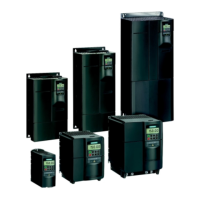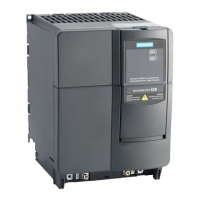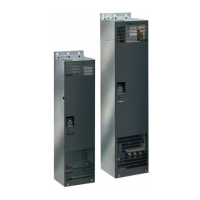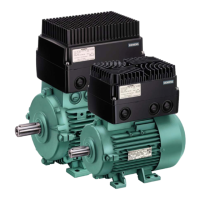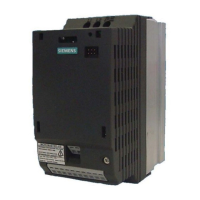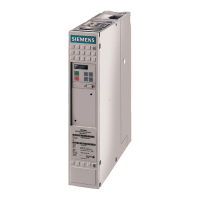Issue 10/06 3 Functions
MICROMASTER 440 Operating Instructions
6SE6400-5AW00-0BP0
233
3.22.2 Thermal monitoring functions and overload responses
Parameter range: P0290 – P0294
r0036 – r0037
Warnings A0504, A0505
Faults F0004, F0005, F0012, F0020, F0022
Function chart number: -
Similar to motor protection, the main function of the thermal power module
monitoring is to detect critical states. Parameterizable responses are provided to
the user which allows the drive system to be still operated at the power limit thus
avoiding immediate shutdown. However, the possibilities of assigning parameters
only involves interventions below the shutdown threshold which cannot be changed
by users.
MICROMASTER 440 has the following thermal monitoring functions:
¾ i
2
t monitoring
The i
2
t monitoring is used to protect components which have a long thermal
time constant in comparison to the semiconductors. An overload with reference
to i
2
t is present if the drive inverter utilization r0036 indicates a value greater
than 100 % (utilization as a % referred to rated operation).
¾ Heatsink temperature
The monitoring of the heatsink temperature r0037[0] of the power
semiconductor (IGBT).
¾ Chip temperature
Significant temperature differences can occur between the barrier junction of
the IGBT and the heatsink. These differences are taken into account by the chip
temperature r0037[1] and monitored.
When an overload occurs regarding one of these three monitoring functions,
initially, a warning is output. The warning threshold P0294 (i
2
t monitoring) and
P0292 (heatsink temperature and chip temperature monitoring) can be
parameterized relative to the shutdown values.
Example
The warning threshold P0292 for the temperature monitoring (chip / heatsink
temperature) is set to 15 °C in the factory. This means that warning A0504 is
output 15 °C below the shutdown threshold.
At the same time that the warning is output, the parameterized responses are
initiated via P0290. Possible responses include:
¾ Reducing the pulse frequency (P0290 = 2, 3)
This is an extremely effective method to reduce losses in the power module, as
the switching losses represent a very high proportion of the overall losses. In
many applications, a temporary reduction of the pulse frequency can be
tolerated in favor of maintaining the process.
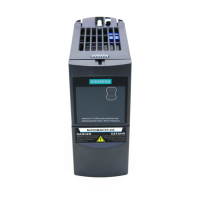
